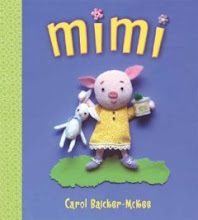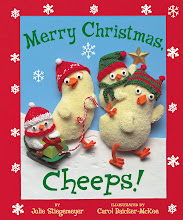
Illustration by Marjorie Torrey, copyright, 1956, Random House
The illustration above (and the close-up detail below) are from my childhood copy of Favorite Nursery Songs, compiled by Phyllis Brown Ohanian and illustrated with delicate watercolor and pencil pictures by the Caldecott-honored Marjorie Torrey. The book, my favorite songbook when I was growing up, was published in 1956 and has been out of print ever since.

Detail from "Ring Around a Rosy"
More about Ms. Torrey's charming illustrations in a minute, but first I want to encourage everyone who can possibly make it to join me in a trek to Washington D.C. for a fly-in, rally, and Congressional briefing on Capitol Hill to amend the CPSIA. You can get all the details, including the info on hotels offering special deals for the event, at a special website here.
Rick Woldenberg of Learning Resources, Inc. (see his CPSIA blog here) has been helping to organize people from many affected industries, large and small, to get our voices heard by Congress. I'm trying to schedule meetings with my senators and representative as well - and I'm taking my teenage daughter, so she can see political activism at work in person (and put in her two cents worth too). I'm planning to leave from Pittsburgh very early on the morning of the first and return in the evening. I have a minivan, and if anyone from the area needs a ride, just shoot me an email and we can work out the details.

Copyright Random House, 1956

Detail from cover
Isn't the cover of this book beautiful? The quality of the color reproductions was really quite remarkable for the era, too. You can readily see the rough texture of the watercolor paper, as well as the soft layers of washes and the nuances of the pencil lines. I think it's notable that these images still come vividly to mind more than 45 years after I first saw them the moment I hear the familiar first lines of songs like "Row, Row, Row Your Boat" or "Here We Go 'Round the Mulberry Bush."
Here's a glimpse of the illustration for the former song, as well as a closer look at a couple of the figures. There's a real sweetness, without veering into saccharine. The botanical elements are consistently precise and beautiful.

I spoke recently with Joe Martyak, the chief of staff at the CPSC, for information about how CPSIA affects children's books, literacy programs, libraries, and the sale of the original art from children's books for an article I'm writing for the Society for Children's Book Writers and Illustrators (SCBWI - visit their website here) and for an opinion piece with a similar theme I'm working on to submit to the Pittsburgh Post-Gazette (which ran one excellent article on CPSIA and dirt bikes but has otherwise ignored the whole thing). Although much of what Mr. Martyak told me could be construed as encouraging from a short-term perspective (he didn't think the CPSC would be going after libraries, literacy groups, booksellers, etc. any time soon due to low priority and lack of resources), my overall mood is one of gloom for the future of children's literature's past unless Congress agrees to try again with the CPSIA. He was clear that their preliminary testing finds many older books hovering around the 300 ppm level - the standard which goes into effect in August. (This is destructive testing because XRF testing is not particularly helpful for books since it can only measure the lead in a particular spot which tells you little about total lead) An even stricter standard of 100 ppm goes into effect in August, 2011, at which time my guess is that few old books will pass.
Mr. Martyak did his best to ask my specific questions, but it's clear there's just much that he and the agency have not yet figured out. And that of course is just one of the many, many problems with passing a tsunami of a law and rushing it into enactment: there are a nearly limitless number of details and judgment calls with a law like this, and no matter how hard-working or well-meaning the folks at CPSC are, they will simply not be able to sort them out any time soon, not in the next year, probably not in the next five. For example, he had no idea how the law would be applied with regard to schools (who become manufacturers under a strict reading of the law when they create unit packets with comb bindings - or when they even just staple a pile of papers together). He thought that the publishers who produce inexpensive staple-bound paperbacks could get away with just testing the staples (since for now "ordinary books" are exempt from testing), but it sounded to me in other published CPSC advisories like deviating from the ordinary book definition meant the whole product had to be tested. And Mr. Martyak had not realized the agency had used different definitions of ordinary books, nor whether that signaled a shift in interpretation.
 I love how she handled the challenge of facing pages that couldn't really bleed together, given the printing limitations at the time.
I love how she handled the challenge of facing pages that couldn't really bleed together, given the printing limitations at the time. Aren't the cherry blossoms breathtaking? And they should be in bloom on April 1st for the rally. Of course, that baby should be sleeping on his back, in an approved, labeled crib. Hope there aren't any fasteners or phthalates in that sleeper. On the whole, I think the CPSC investigators would have a field day, as would CYS.
Aren't the cherry blossoms breathtaking? And they should be in bloom on April 1st for the rally. Of course, that baby should be sleeping on his back, in an approved, labeled crib. Hope there aren't any fasteners or phthalates in that sleeper. On the whole, I think the CPSC investigators would have a field day, as would CYS.Right now, those of us who oppose the CPSIA are largely at the wind-blowing stage. (The ATV industry and the thrift stores too are past that though). But the bough-breaking phase is not far off - next February 10th will herald both the testing and certification mandates - and the end of many more businesses and safe, useful products. We need to take action now, before disaster strikes.
 Not sure if this guy is looking for his little dog, or for the toys, books, and clothes he used to have.
Not sure if this guy is looking for his little dog, or for the toys, books, and clothes he used to have.
 Not sure if this guy is looking for his little dog, or for the toys, books, and clothes he used to have.
Not sure if this guy is looking for his little dog, or for the toys, books, and clothes he used to have.Favorite Nursery Songs is 64 pages long. Color printing was quite expensive then, so the spreads alternate between full color and half tone pencil drawings like the one above. As a child, I loved them too, because they were easier for me to try to copy when I was teaching myself to draw. My kids used to imitate her style too.


One of the extra elements common in older books are illustrated endpapers, like those above. You still see them in some picture books today, but much less frequently since they're an added expense, as well as more work for the illustrator (who is generally paid the same whether or not the end papers are illustrated). Endpapers are not usually included when a hardcover is reprinted as a paperback, which is yet another reason to prefer the older editions.
The description below is from a bio of Marjorie Torrey (who was also an acclaimed mystery writer) by Tom and Enid Schantz that appeared in the Rue Morgue Press in 2002:
"But it was her work as an illustrator that brought her fame and awards. Her first Caldecott Honor book, Sing Mother Goose, with songs by Opal Wheeler, came in 1946. The following year she earned another Caldecott Honor medallion for illustrating Sing in Praise: A Collection of the Best Loved Hymns, once again selected by Wheeler. A Caldecott historian wrote of her work: 'The full-color illustrations reflect the solemnity and reverence seen in Torrey’s Mother Goose collection, and these interpretations communicate the essence and importance of the songs’ words…Torrey’s gentle black-and-white illustrations possess the softness of pencil, some the sharp lines of pen and ink, and others a combination of both.'...All of her books are out of print today. Even her Caldecott honor books are difficult to find, often confined to rare book rooms or the special collections section of larger libraries."
You can read the whole article here. And despite the rarity of her books (which my attempts at searching for them confirm), you can still find a few inexpensive copies (see these amazon listings for the song book I own), meaning the volumes likely won't qualify as collectibles under CPSIA standards - so better get a copy while you can.
Ms. Torrey was also well known for her version of Alice in Wonderland.I'm hoping someone decides to republish her work.
Here are two more CPSIA articles on books in the MSM: a Washington Post article that ran in the health section, and one from the St. Petersburg Times here. Very discouraging, but I think Congress ought to take a look at the typical comments about this law. Don't know who those constituents are that they claim are pestering to preserve the law unchanged, but they're not exactly vocal in public.





















2 comments:
We have Favorite Nursery Songs. I found a copy at a garage sale when my eldest was a toddler. We've loved it.
Phyllis Brown Ohanian is my grandmother. She's still alive at 96. I'll ask her if she has any copies left!
Post a Comment